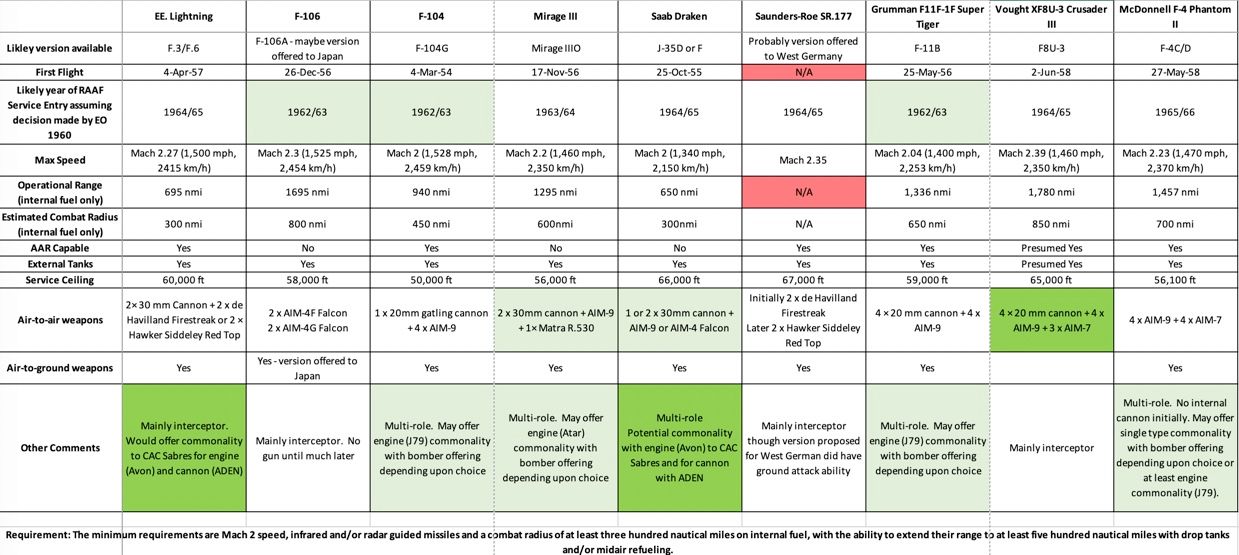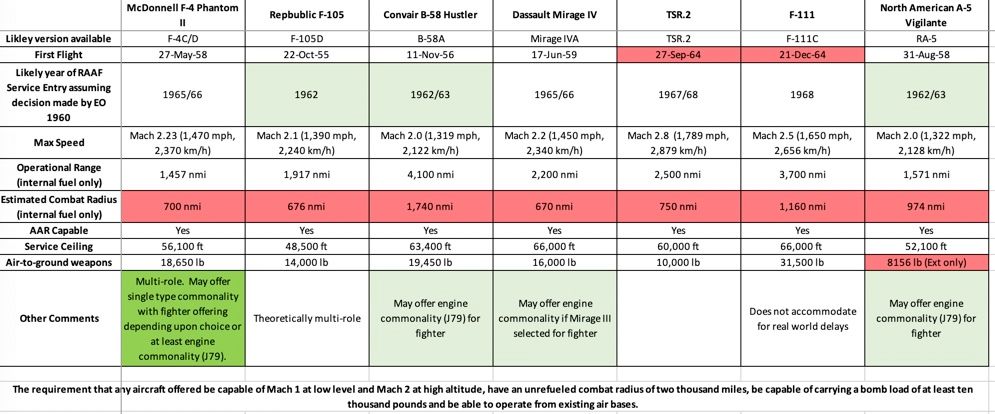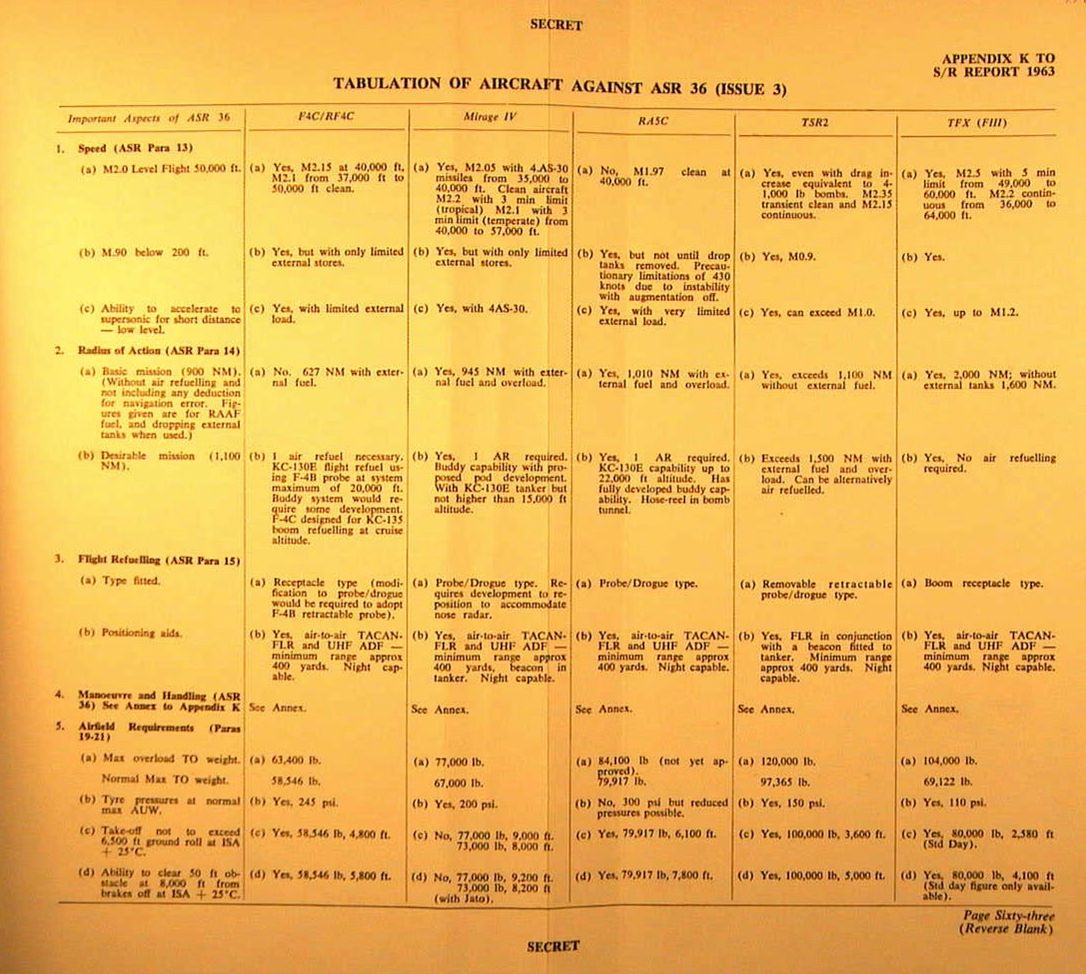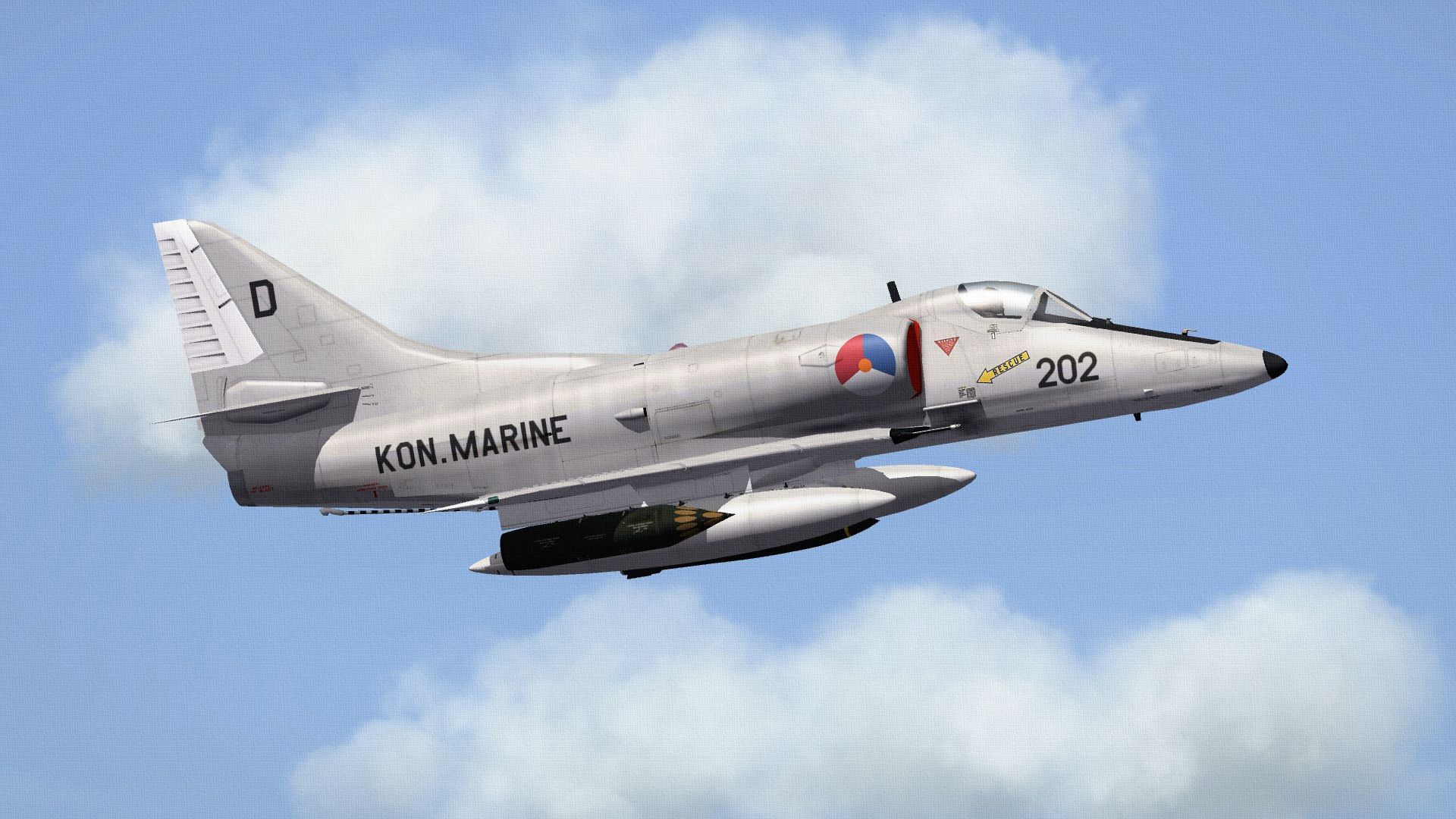As promised, here's a quick evaluation of the contenders against the RAAF requirement in this scenario - note the stated requirement at the bottom. I have also taken some liberty in some of the inputs on things such as combat radius and in-service date:
The fighters:

The bombers:

The colour coding is as such:
Red - Does not meet requirement or, in the case of dates, meant it would have to be ordered off the drawing board.
Pale Green - An advantage
Bright Green - Possible deciding advantage
To take it further, we would need required in service dates, likely order dates, weightings for requirements.
The fighters:

The bombers:

The colour coding is as such:
Red - Does not meet requirement or, in the case of dates, meant it would have to be ordered off the drawing board.
Pale Green - An advantage
Bright Green - Possible deciding advantage
To take it further, we would need required in service dates, likely order dates, weightings for requirements.
Last edited:


